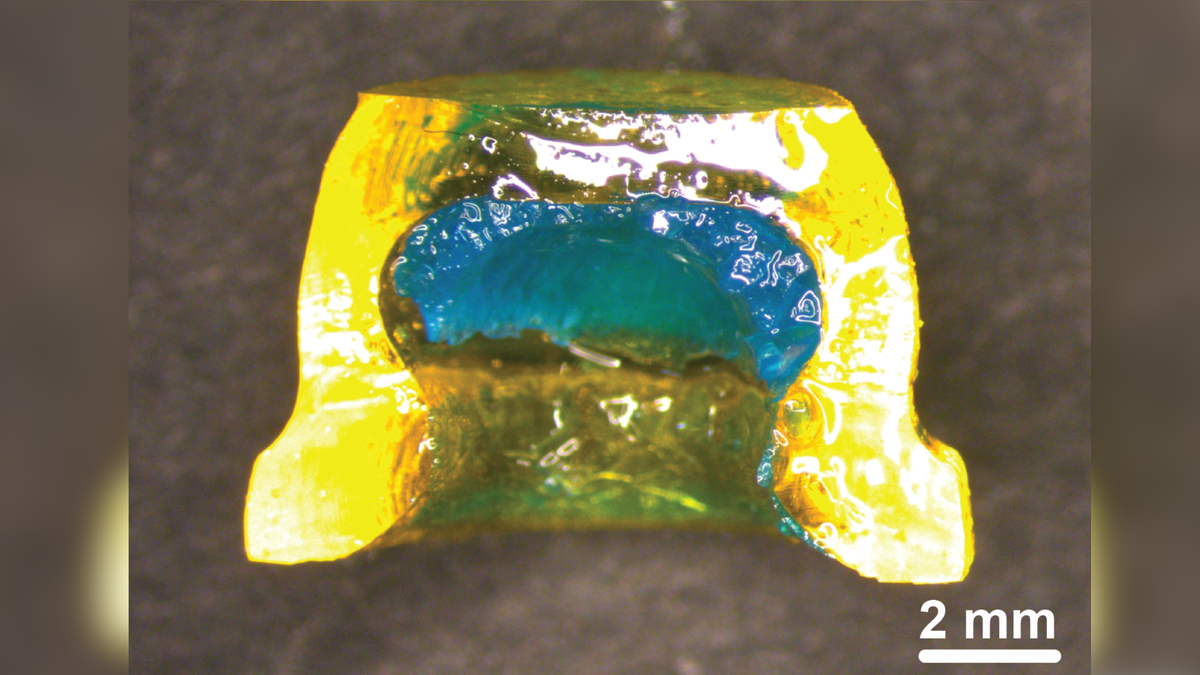
Scientists have developed a new device inspired by octopus suckers that can deliver drugs without requiring needles or pills. They’ve already tested it in humans in a small, short trial.
The 0.4 by 0.2 inch (1.1 by 0.6 centimeters) patch can stick to the inner lining of the cheek, stretch across it and increase the absorption of an attached drug.
When used in dogs for three hours, the patch efficiently delivered two drugs — desmopressin, which is used to treat excessive thirst and the urge to pee often, and semaglutide, the active ingredient in Ozempic and Wegovy, drugs that are respectively used to treat diabetes and obesity. A version of the patch without a drug attached was also safely used by 40 human volunteers for 30 minutes while they were able to talk, move around and rinse their mouths with water.
Further development is needed. However, the patch could represent a less invasive and more comfortable approach to drug delivery, especially for larger drugs that are poorly absorbed by the digestive system so can normally only be injected using needles.
Related: DeepMind’s AI used to develop tiny ‘syringe’ for injecting gene therapy and tumor-killing drugs
“This is an interesting and well-designed series of studies expanding the range of drug delivery systems inspired by nature,” Adrian Williams, a professor of pharmaceutics at the University of Reading in the U.K., who was not involved in the research, told Live Science in an email. “Stretching is known to increase the permeability of mucosal membranes [the protective layer that lines your organs and cavities like the mouth], and is particularly promising for large biological drugs, such as peptides and proteins, which tend to be poorly absorbed and so are usually given by injection.”
Other ways of delivering large drugs to the body, for example via the nose or using microneedles applied to the skin or in capsules, can be inefficient and difficult to make, the study authors wrote.

“Compared to nasal delivery systems, we would offer something which is much more straightforward to use because you have the drug dose contained in the suction patch, you apply it on your mucosa and then you press. That’s it,” Jean-Christophe Leroux, senior study author and professor of drug formulation and delivery at ETH Zurich, told Live Science. “If you compare it to microneedles, it is less invasive,” he said.
The authors only tested the patch for a short time so would need to find out what would happen if it was used repeatedly. They’d also need to determine which drugs would work with the technology: the target is large molecules, such as those used to treat obesity or osteoporosis, but they can’t be too large to fit in the cup, Leroux said.
Chris McConville, an associate professor in pharmaceutics, drug formulation and delivery at the University of Birmingham in the U.K. who was not involved in the research, told Live Science in an email that although the device is interesting, it may not be very practical. The authors tried to mitigate the risk of accidental swallowing of the patch by using dental floss to link it to the volunteer’s shirts, for example, but this needs to be further explored.
The authors also used a compound that increases the absorption of drugs called a permeation enhancer with the patch, which could mask any benefits of using it.
“I am not sure what the device offers over buccal tablets [drugs that stick to the inside of the mouth and dissolve] as it seems that it is the permeation enhancers that increase absorption,” McConville said.
The findings were published Wednesday (Sept. 27) in the journal Science Translational Medicine.

